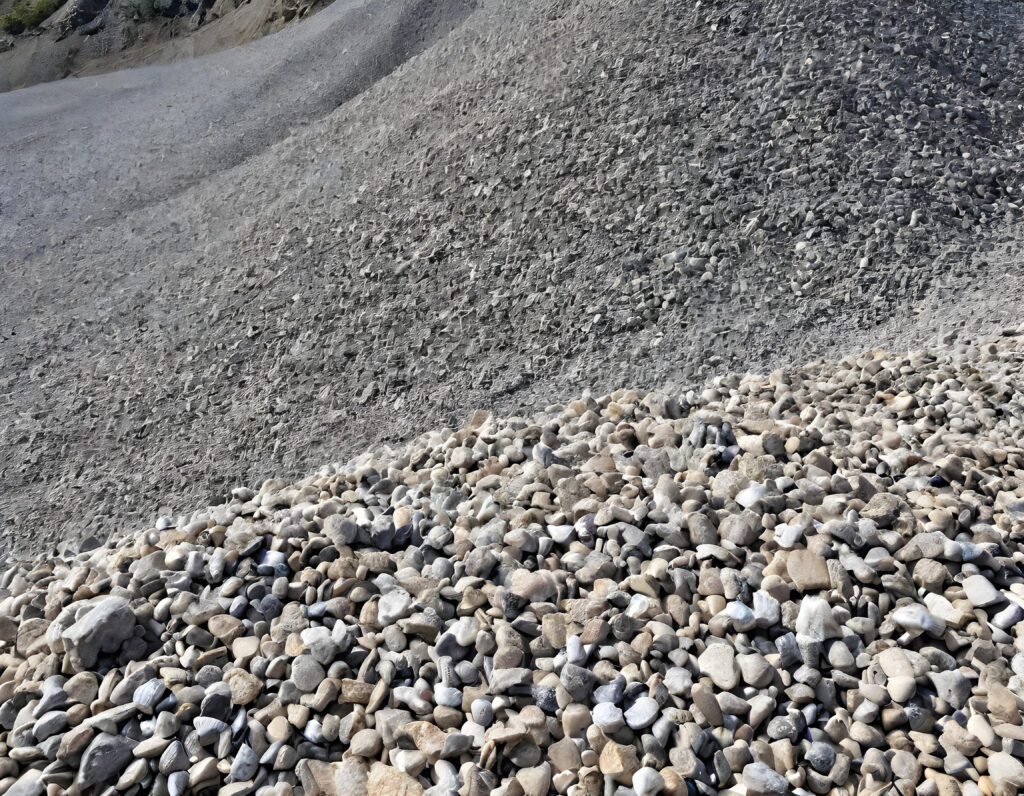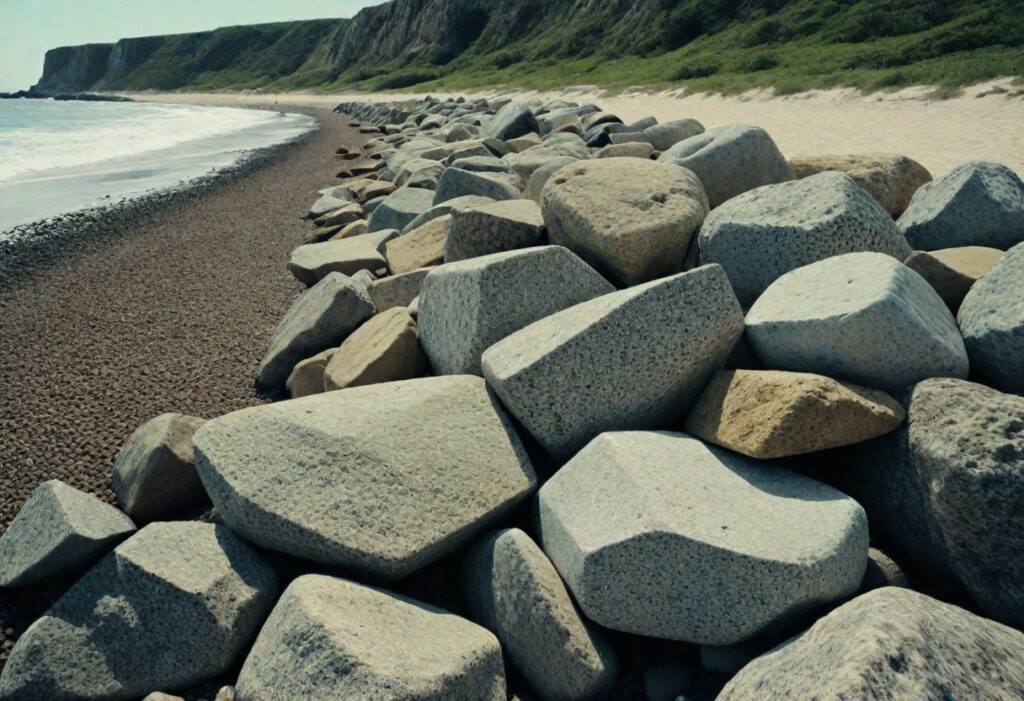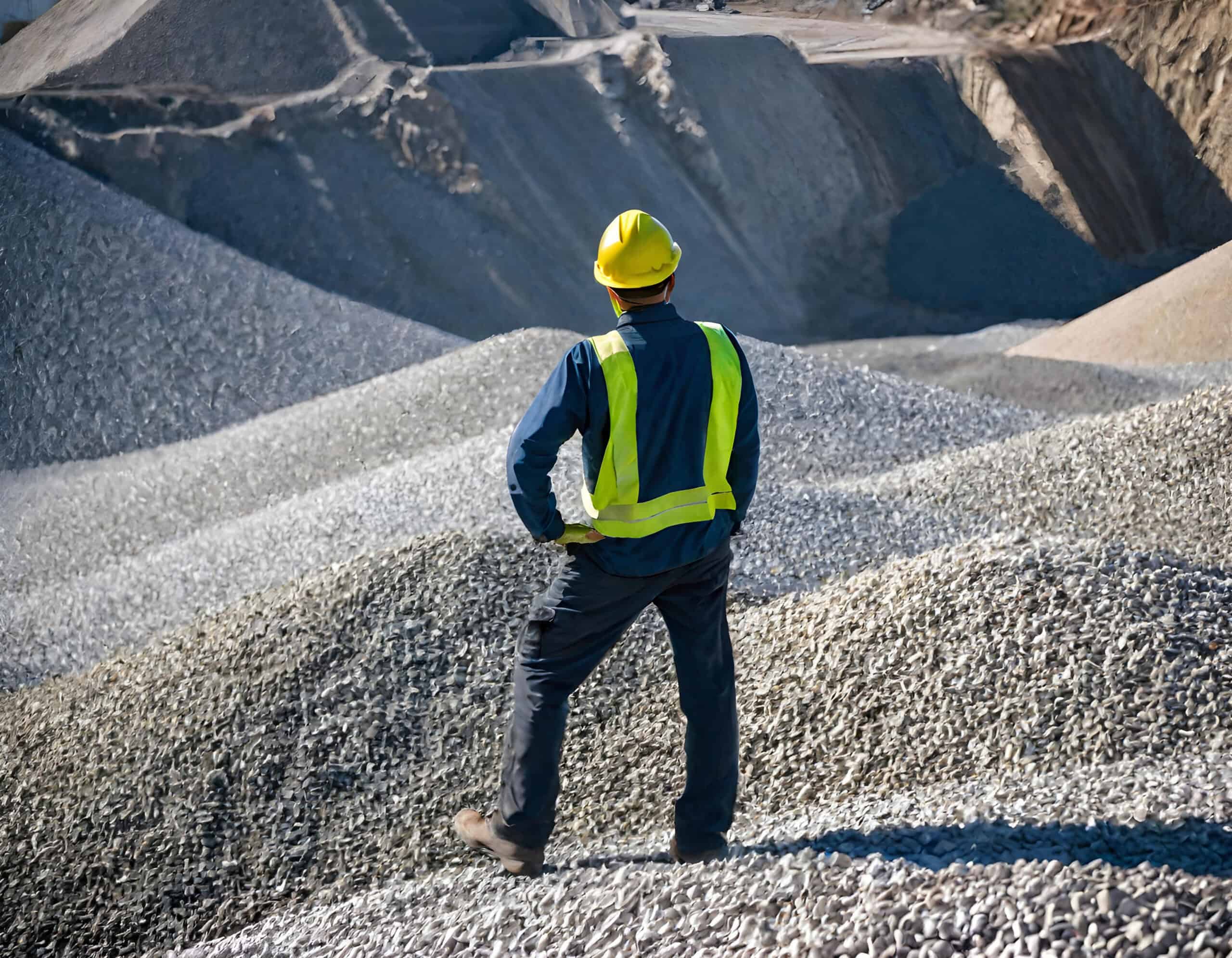Construction aggregates are like the building blocks of the infrastructure around us. Common construction aggregates are typically loose materials that, when bound with a binder like cement or asphalt, become essential components in various construction projects. Here’s a breakdown of some common construction aggregates types/sizes and their uses:
#1 Stone
Description: Largest size stone, usually ranging from 2 to 4 inches.
Uses: Used for heavy-duty applications, such as large drainage projects, and as a base layer for large construction projects.
#2 Stone
Description: Crushed stone, typically 2 to 3 inches in size.
Uses: Used for large-scale construction projects, drainage systems, and as a base material for roads.
#3 Stone
Description: Larger crushed stone, typically 1 to 2 inches in size.
Uses: Used in erosion control, road base layers, and as a sub-base for heavy-duty pavements.
#4 Stone
Description: Crushed stone that is approximately 1.5 inches in size.
Uses: Used for drainage solutions, erosion control, and as a base material for large construction projects.
#5 Stone
Description: Crushed stone, about 1 inch in size.
Uses: Used in road construction, concrete mixes, and drainage systems.
#7 Stone
Description: Smaller than #57, usually about 1/2 inch in size.
Uses: Used in concrete mixes, landscaping, and as a base layer for smaller construction projects.
#8 Stone
Description: Small crushed stone, typically 3/8 inch in size.
Uses: Used for asphalt mix, decorative gravel, and as a component in concrete mixes.
#9 Stone
Description: Very small crushed stone, typically around 3/16 to 3/8 inch in size.
Uses: Used in asphalt production, as a surface layer for driveways and walkways, and in landscaping.
#10 Stone
Description: Very fine crushed stone, often used as a by-product of the crushing process.
Uses: Used for paving, as a base layer for pavers, and in asphalt mixes.
#57 Stone
Description: A type of gravel that is about 1 inch in size.
Uses: Often used in concrete mixes, for drainage projects, septic systems, and as a base material for driveways and roads.
#67 Stone
Description: Crushed stone with particle sizes ranging from 3/4 inch down to fine particles.
Uses: Used in concrete mixes, asphalt production, and as a base material for driveways and pathways.
#78 Stone
Description: Smaller size gravel, usually about 1/2 inch in size.
Uses: Used for driveways, walkways, and as a component in asphalt and concrete mixes. It is also used for decorative landscaping.
#89 Stone
Description: Crushed stone with smaller particle sizes, typically 3/8 inch.
Uses: Used for driveways, pathways, and in concrete and asphalt mixes.

#4 Gravel
Description: Coarse gravel, typically around 1 to 2.5 inches in size.
Uses: Used for drainage, as a base layer for roads and driveways, and in construction projects requiring coarse materials.
Base Materials
Description: Often made from crushed stone or recycled concrete.
Uses: Used as a base layer under roads, sidewalks, and foundations to provide a stable and strong foundation. Common base materials include:
- Crusher Run: A mix of fine and coarse aggregates, used for road and driveway bases.
- Road Base: Typically a blend of crushed stone and fine material, designed to provide a strong base for roads and highways.
Gabion Stone
Description: Large stones, typically 4-8 inches in size.
Uses: Used to fill gabion baskets for retaining walls, erosion control, and landscaping features.
Bank Run Gravel
Description: Unprocessed gravel taken directly from natural deposits.
Uses: Used as a base material for road construction, driveways, and as fill material.
Dense Grade Aggregate (DGA)
Description: A combination of crushed stone and stone dust.
Uses: Used as a base layer for driveways, roads, and parking lots to provide a firm foundation.
Surge Stone
Description: Large-sized crushed stone, typically 3-8 inches in size.
Uses: Used for drainage, erosion control, and as a base material in construction projects.
Permeable Aggregates
Description: Aggregates that allow water to pass through, such as certain types of gravel and crushed stone.
Uses: Used in permeable pavements, drainage systems, and erosion control measures.
Paver Base
Description: A blend of sand and crushed stone.
Uses: Used as a base layer under pavers, patios, and walkways to ensure stability and proper drainage.
Riprap
Description: Riprap consists of large, angular stones typically ranging in size from 6 inches to over 2 feet.
Uses: Riprap is primarily used for erosion control, shoreline protection, and to stabilize slopes and drainage channels. It is commonly employed in the construction of seawalls, riverbanks, bridge abutments, and other structures subject to water flow or wave action.
Railroad Ballast
Description: Crushed stone, typically granite, used to form the track bed on which railroad ties are laid.
Uses: Provides stability, drainage, and support for railroad tracks.

Armor Stone (Armourstone)
Description: Large, durable stones used to protect shorelines, riverbanks, and other structures from erosion.
Uses: Used in the construction of seawalls, breakwaters, and other structures designed to prevent erosion and protect against wave action.
Clay
Description: Fine-grained natural soil material containing clay minerals.
Uses: Used in the manufacture of bricks, cement, and ceramics, as well as in construction for filling and leveling.
C33 Construction Sand
Description: Fine aggregate, also known as concrete sand.
Uses: Primarily used in concrete mixtures for construction, providing a stable base for building foundations and roads.
Mason Sand
Description: Fine sand with uniform particle size.
Uses: Used in mortar for masonry work, sandboxes, and as a base for swimming pools.
Manufactured Sand
Description: Sand produced by crushing rocks, quarry stones, or larger aggregates.
Uses: Used as an alternative to natural sand in concrete and mortar mixes, providing similar strength and durability.
Bedding Sand
Description: Clean, coarse sand.
Uses: Used as a bedding layer for pipes, conduits, and as a base material under concrete slabs.
Common Construction Aggregates Applications for Labelled Sizes
– Highway Construction: Aggregates like #3, #4, and #5 stones are commonly used in the sub-base and base layers to provide stability and durability.
– Drainage Systems: Stones like #4 and #57 are used to create efficient drainage systems, preventing water accumulation and erosion.
– Concrete Production: Various sizes, such as #8, #67, and #89 stones, are used in concrete mixes to achieve the desired strength and durability.
– Landscaping: Aggregates like #7 and #9 stones are used for decorative purposes, pathways, and small construction projects.
– Erosion Control: Armor stone is specifically used to protect shorelines and riverbanks, ensuring stability and preventing erosion.
These common construction aggregates are crucial for providing the necessary properties for different construction projects, ensuring structural integrity, durability, and proper drainage. Each type of aggregate has specific characteristics that make it suitable for particular applications, enhancing the overall quality and performance of the construction.

